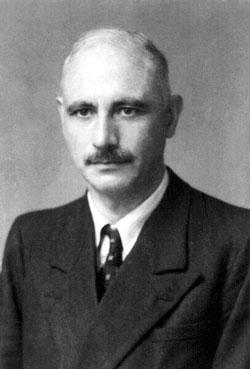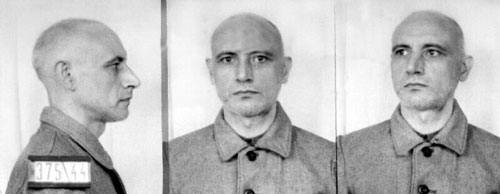Jacques Stosskopf

Born in Paris on 27 November 1898, Jacques Stosskopf began military service in 1917 as an artillery cadet and received the Croix de Guerre at the end of World War I. He joined the Ecole Polytechnique in 1920 and opted for a career in maritime engineering in 1924. Appointed head of the section for the construction of new craft at the Lorient naval shipyard in October 1939, he was promoted to first-class chief engineer of maritime engineering in November at the age of 41. During the first few months of the war, he contributed to the important role of the shipyard in maritime operations, in particular the development of the system used to sweep German underwater mines. From the arrival of German submarines at the port in 1940, the chief engineer, under the pretext of supervising the work of his staff as closely as possible, continued to inspect the docks. A fluent speaker of German as a result of his Alsatian origins, Jacques Stosskopf won the trust of the occupying forces.
The authoritarian engineer, with his strict, cold demeanour, was soon regarded by personnel at the shipyard as an enthusiastic collaborator who would scrupulously inspect tasks given to the French workers by the Germans, even inside the workshops. Kriegsmarine officers became accustomed to the presence of the engineer around the cavities and basins. When the Lorient-Kéroman base became operational at the end of 1941, his privileged relationship with the general staff of the enemy meant that he became one of the few Frenchman to enter the base.
With his exceptional memory, for four years Jacques Stosskopf observed the submarines that crossed the Port-Louis channel: iron cross, ace of spades, fish and sirens, laughing bovidae from a famous brand of cheese ?he scrupulously noted the insignias painted on the kiosks of the structures which, with their victory pennants, made it possible to identify these redoutable machines of war. Remarkably discrete, this soldier in the shadows kept a daily record of U-boat movements, which he recited from memory at meetings with the Alliance network, where he would pass on valuable information to British admirals. The dismantling of this network led to the arrest of Jacques Stosskopf on 21 February 1944.
Confined to a shack at a camp known as Schirmeck, he was transferred to another camp, Struthof, where he was executed with a single shot to the neck on 1 September 1944, shortly before the arrival of the Allies in Alsace. Having paid for his glorious contribution to the Resistance with his life, Jacques Stosskopf was posthumously promoted to Commander of the Legion of Honour by General de Gaulle in October 1945. On 6 July 1946, the Kéroman base was named in his honour.

Jacques Stosskopf après son passage dans les mains de la gestapo de Strasbourg. Photo DMPA

